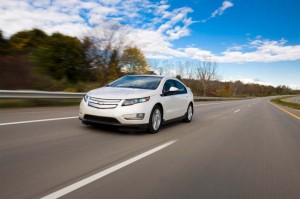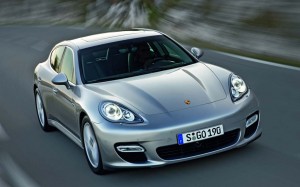American motorists no longer need worry about what they’ll have to sacrifice trading in a larger vehicle for a smaller one. A new study by J.D. Power and Associates finds that, “across the board,” manufacturers are offering small car buyers the sort of features and amenities they might not even have found in larger vehicles of a decade ago.
And from the most basic transportation all the way to the most expensive and exotic, the industry is delivering far more than ever before, according to Power’s annual APEAL study, which looks at automotive performance, execution and layout.
“Automakers are designing better cars than we’ve ever seen,” said Dave Sargent, Power’s director of global automotive operations. “It’s not just one or two manufacturers. It’s across the board, which means that for consumers it’s a great time to be in the car market.”
Traditionally, downsizing to save money or improve fuel economy meant sacrificing comfort and performance as well as some of the other features normally found in larger and more expensive products. But as competition increases and as American motorists begin to downsize in large numbers the industry has responded by delivering smaller vehicles that no longer fall into the econobox category, suggested Sargent.
“The average compact car today is as good as the midsize car a person might now be trading in,” he said, noting it probably has better features as well as improved fuel economy.
That’s good news considering that a full 27% of the 74,000 new vehicles owners surveyed by Power for the 2012 APEAL study downsized. Only 13% “upsized.” The rest purchased or leased a vehicle in the same segment as before.
While small car owners are increasingly happy with their purchases, the latest APEAL study shows that motorists are still most pleased with “big, fast, expensive cars,” said Sargent, “which probably isn’t a surprise. Porsche topped the chart for the eighth year in a row, with Jaguar posting the sharpest improvement among luxury marques. European brands did well overall.
That largely reflects the results of the recent J.D. Power Initial Quality Survey. But there is a distinct difference between the IQS and APEAL. The former measures “things-gone-wrong,” while the newer study examines what the industry dubs “things-gone-right,” those factors that can surprise and delight an owner and even overcome minor quality problems. These might include a particularly attractive design, a powerful engine, better fuel economy or a high-tech infotainment system.
Notably, in the IQS – released in June – those digital information and entertainment systems generated the single largest category of complaints. But according to APEAL, they’re also the source of significant praise – when they work right.
Systems like Ford’s Sync are “a double-edged sword,” stressed Sargent, “because most people find them satisfying if they work as expected. But a small, but significant minority have problems.”
The fact that a system like Sync can now be ordered in a subcompact like the Ford Fiesta underscores the changes in the way manufacturers are approaching the design and development of even their most basic products, the 2012 APEAL study shows.
But small cars still tend to generate lower scores in the study. And introducing a new entry model can hurt a manufacturer – as happened to Hyundai, which posted a rare decline in the 2012 APEAL because of the new Accent which shifted the brand’s model mix downward.
Among individual brands, Dodge showed the biggest improvement in the mainstream – largely because it has been dropping some of its older, lower-scoring models, such as the Caliber – which is being replaced this year by the new Dodge Dart.
Chevrolet received the most awards in individual vehicle segments, a total of three for the Avalanche, Sonic and Volt. Seven other brands received two awards each: Audi, Dodge, Ford, Kia, Mini, Nissan and Porsche.
Suzuki was the bottom-ranked model, scoring 745 points compared to an industry average 788. Other brands in the bottom five were – in ascending order – Smart, Mitsubishi, Subaru and Scion.
Porsche topped the chart with a score of 887. It was followed by Jaguar, BMW, Audi and Mercedes-Benz. Luxury makers, in fact, accounted for the top 11 brands – 12 if you include Britain’s Mini.


